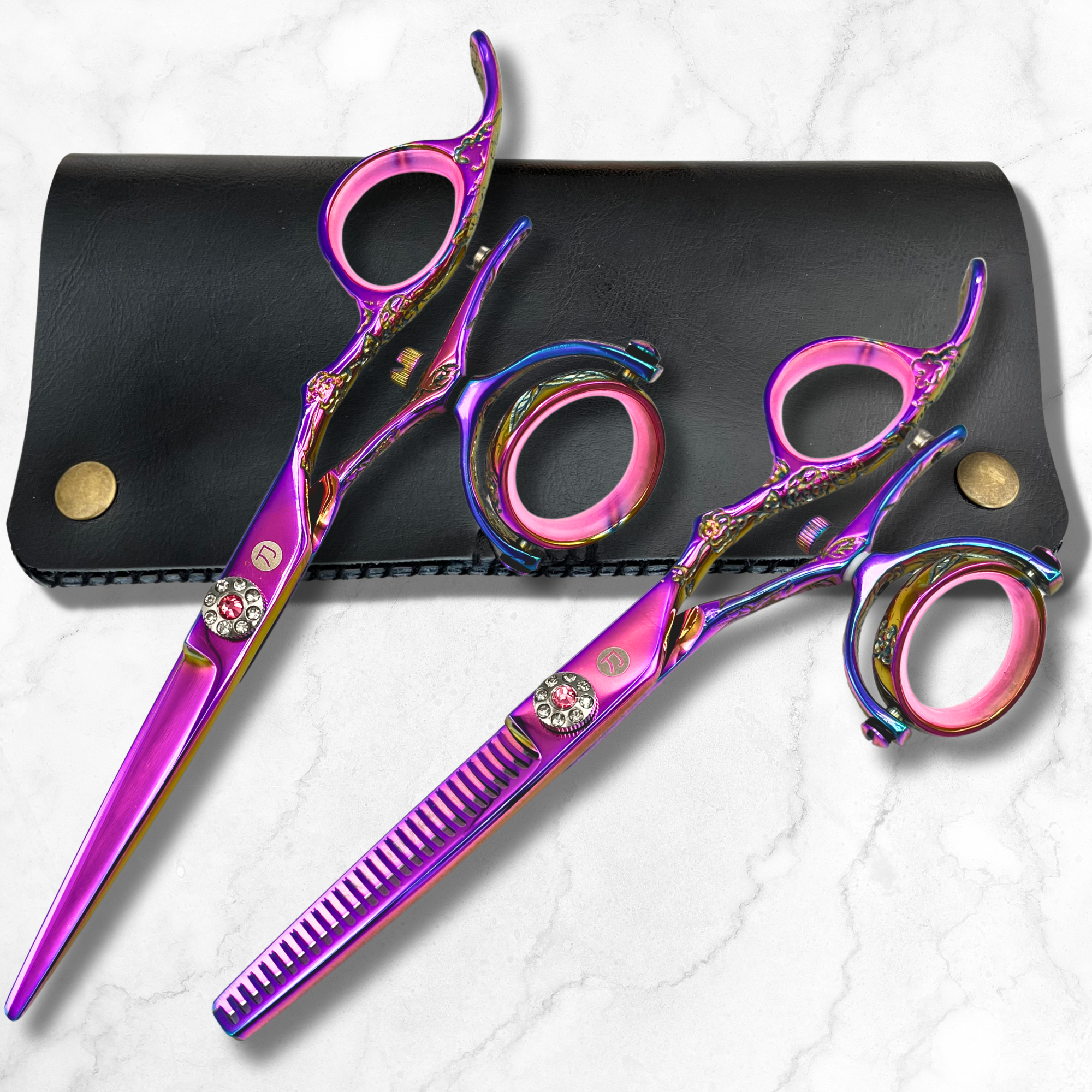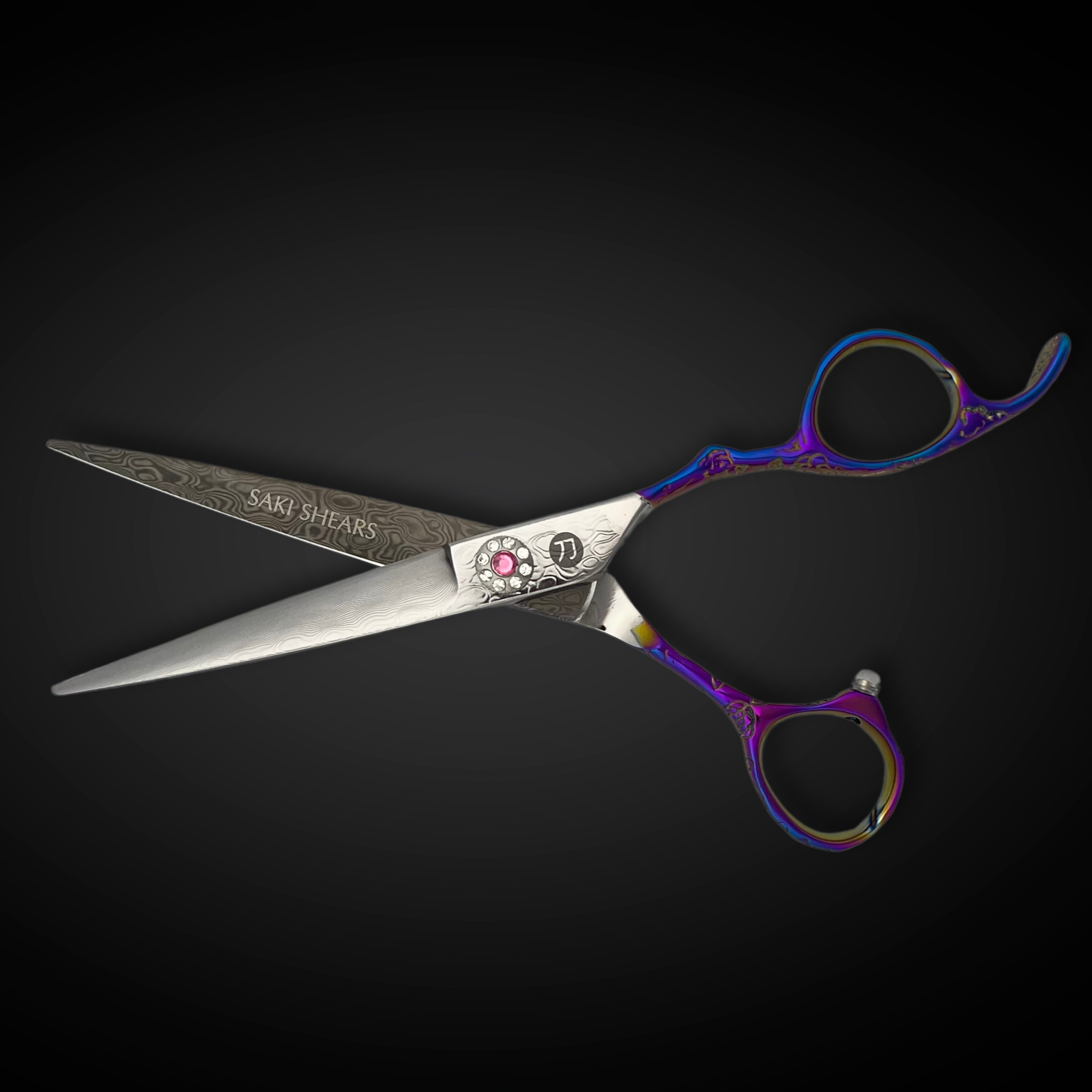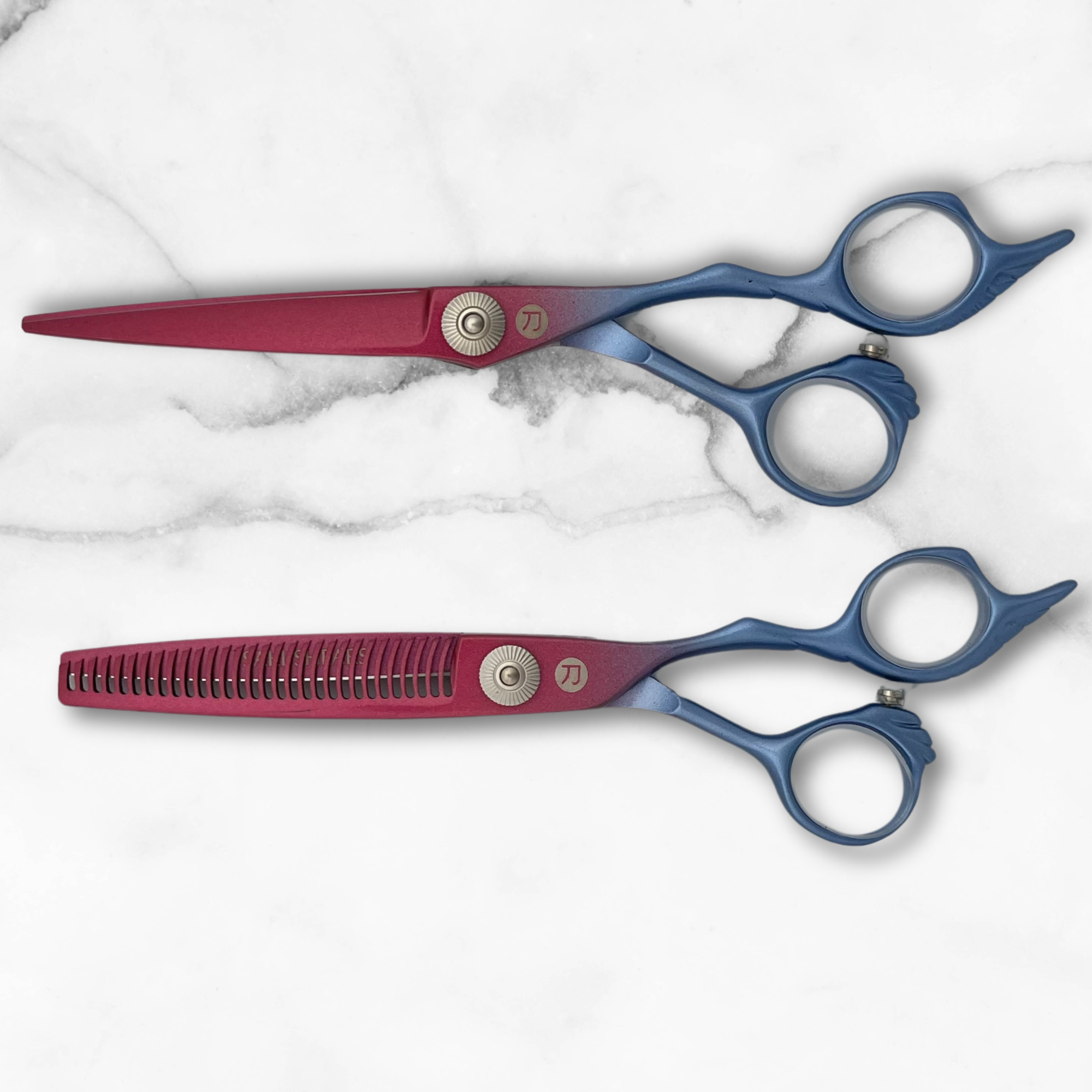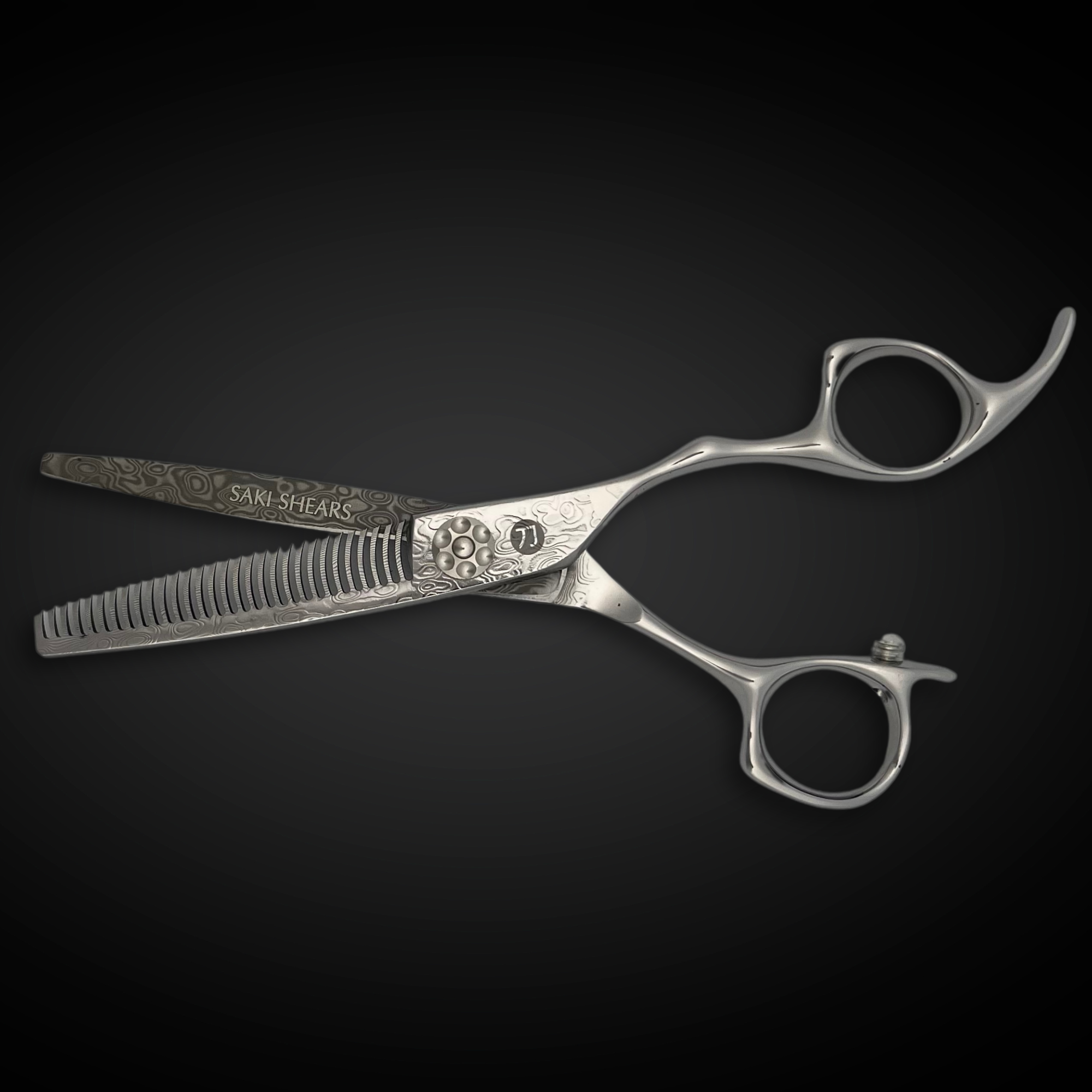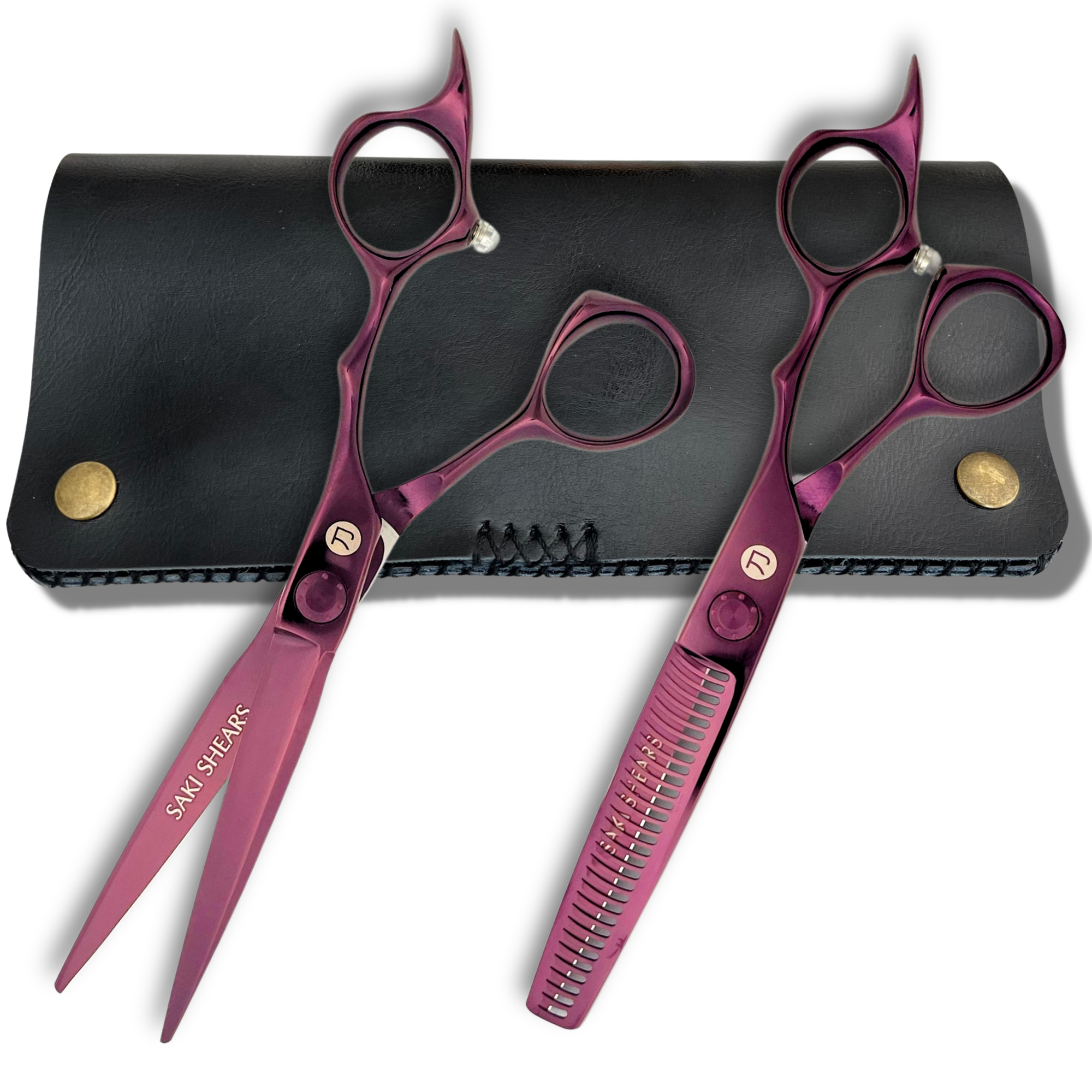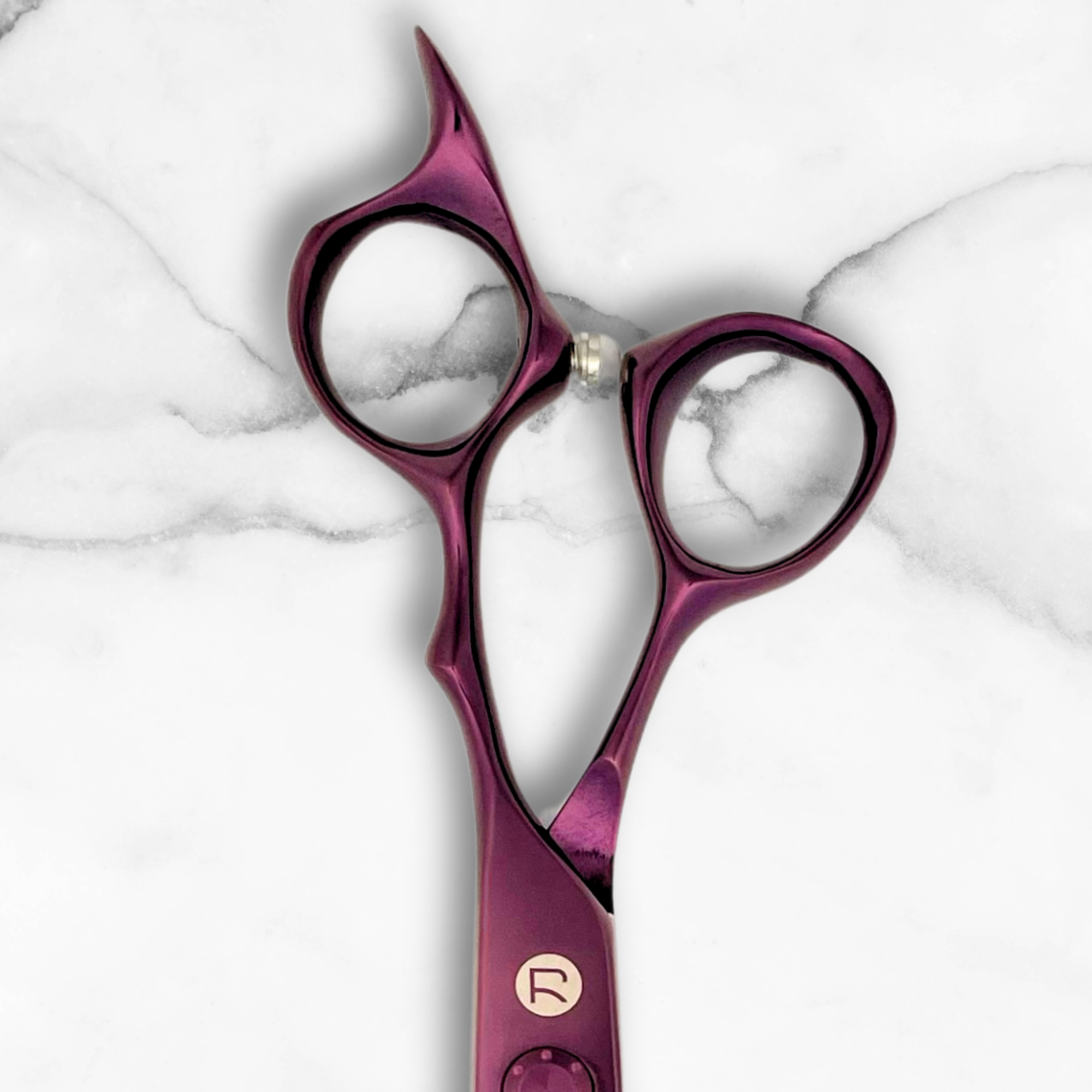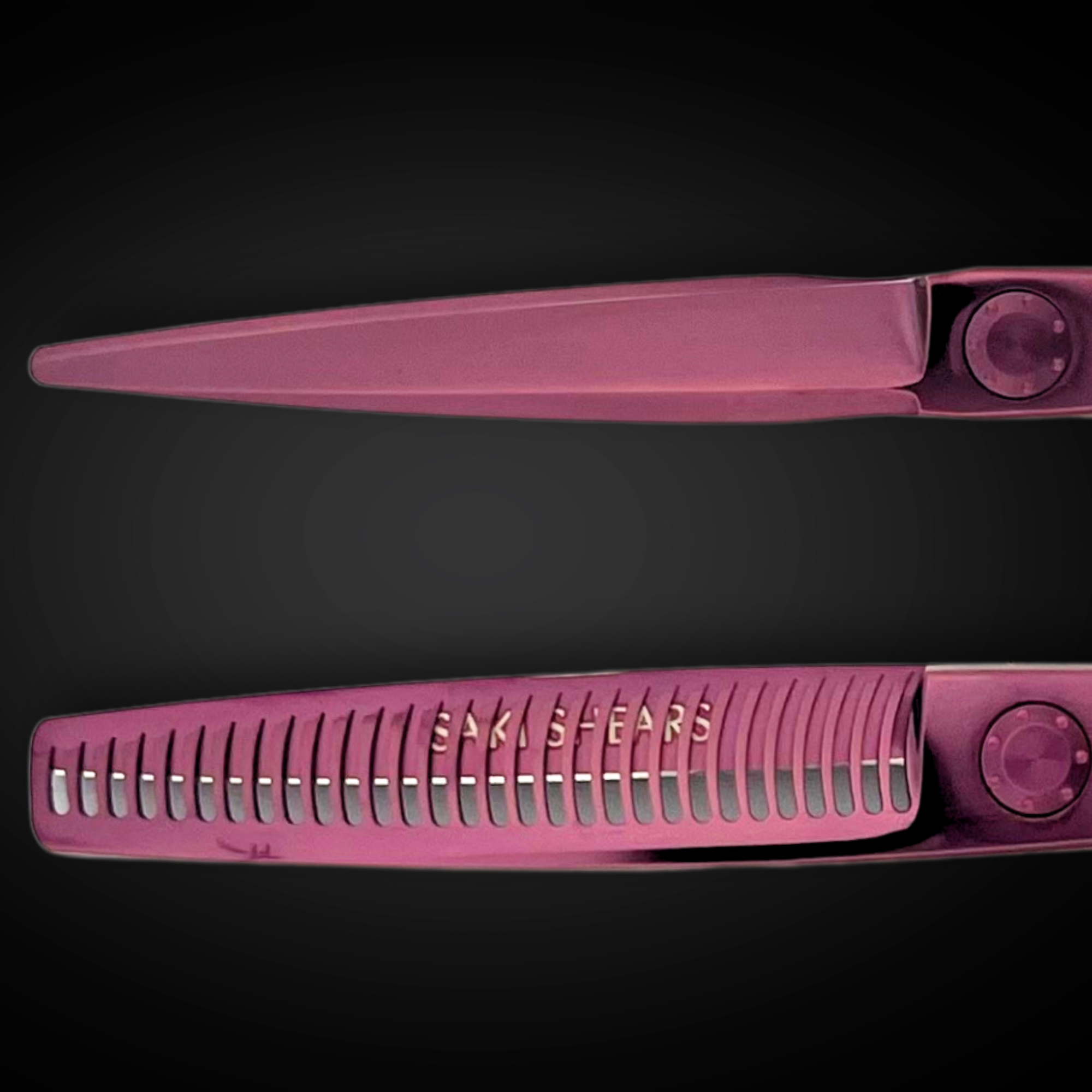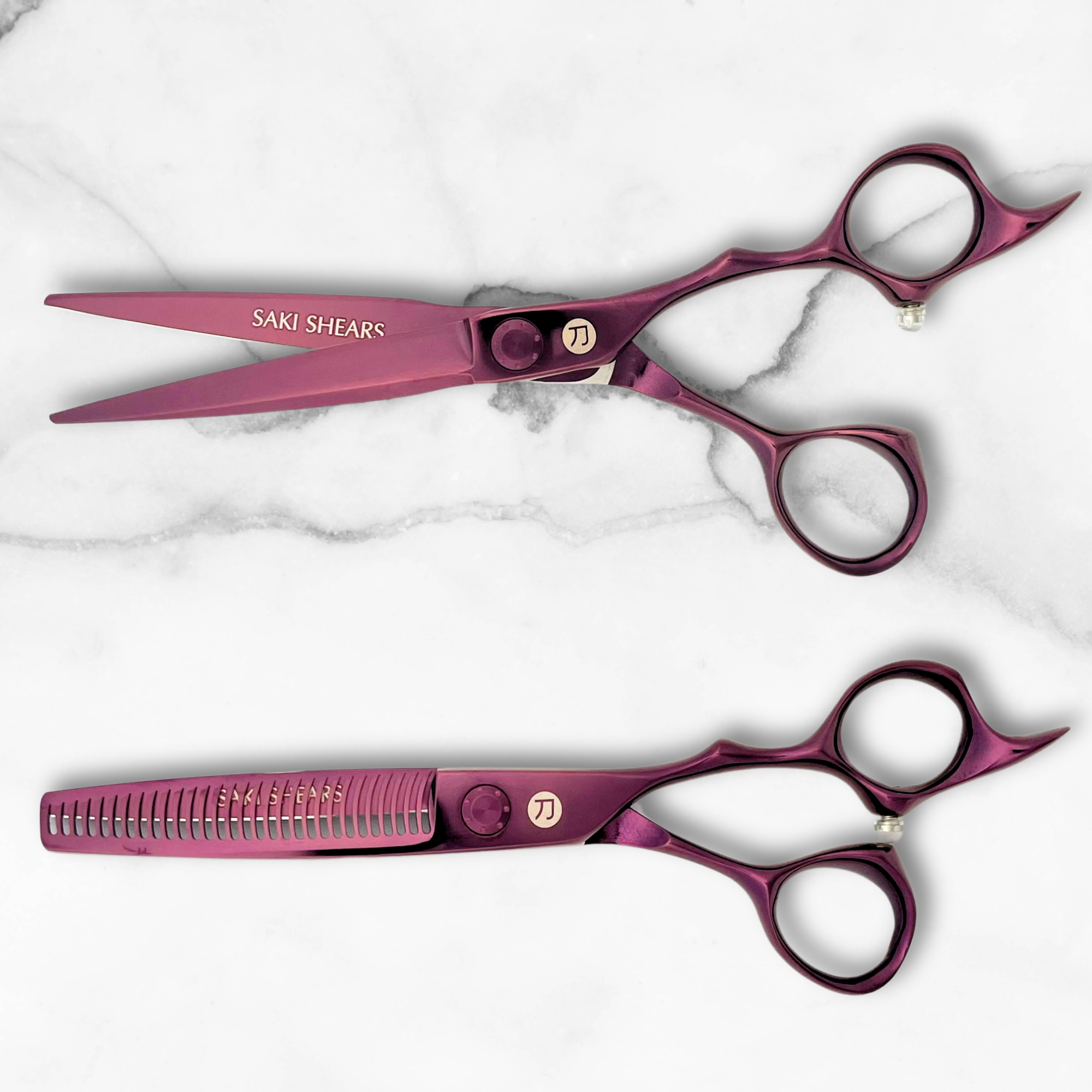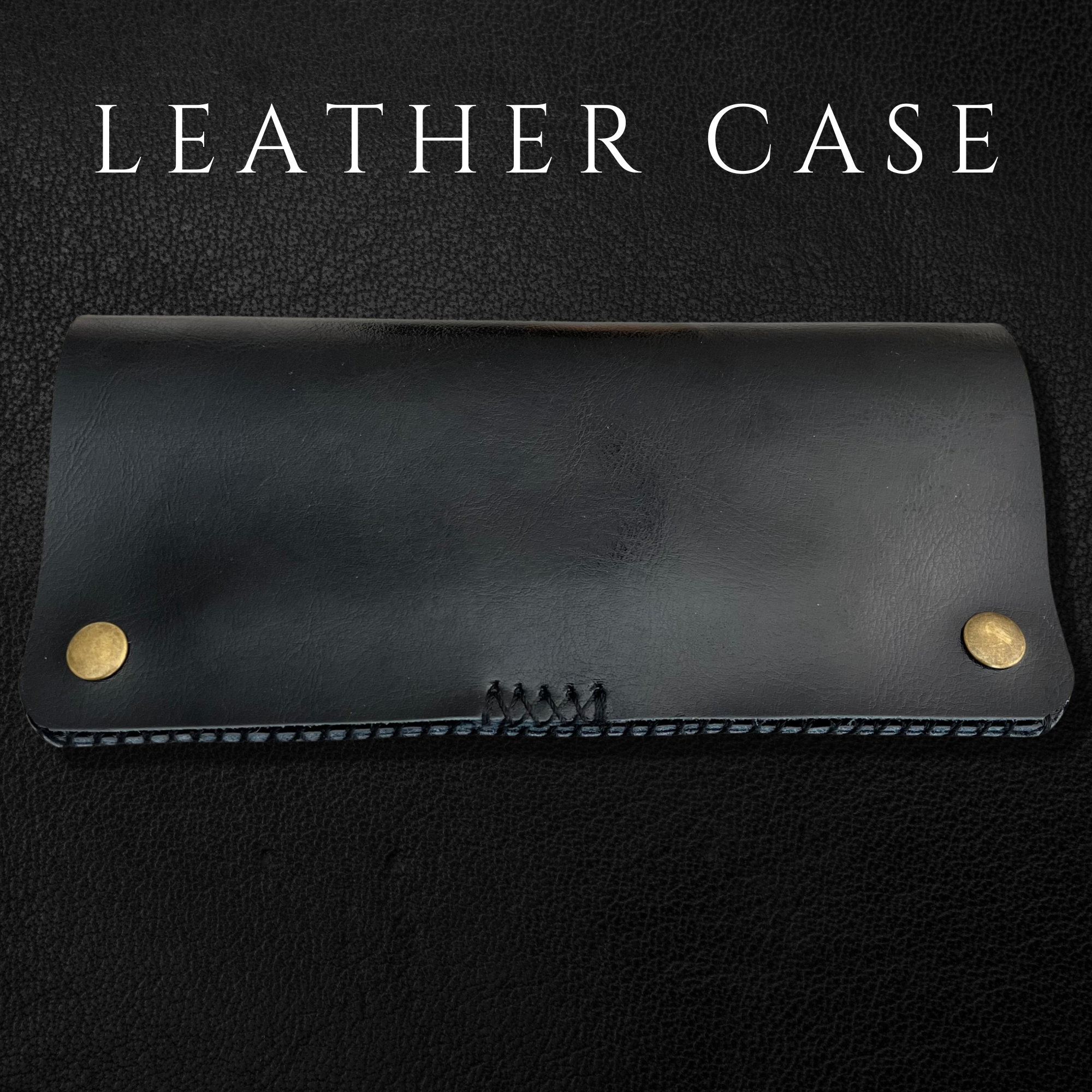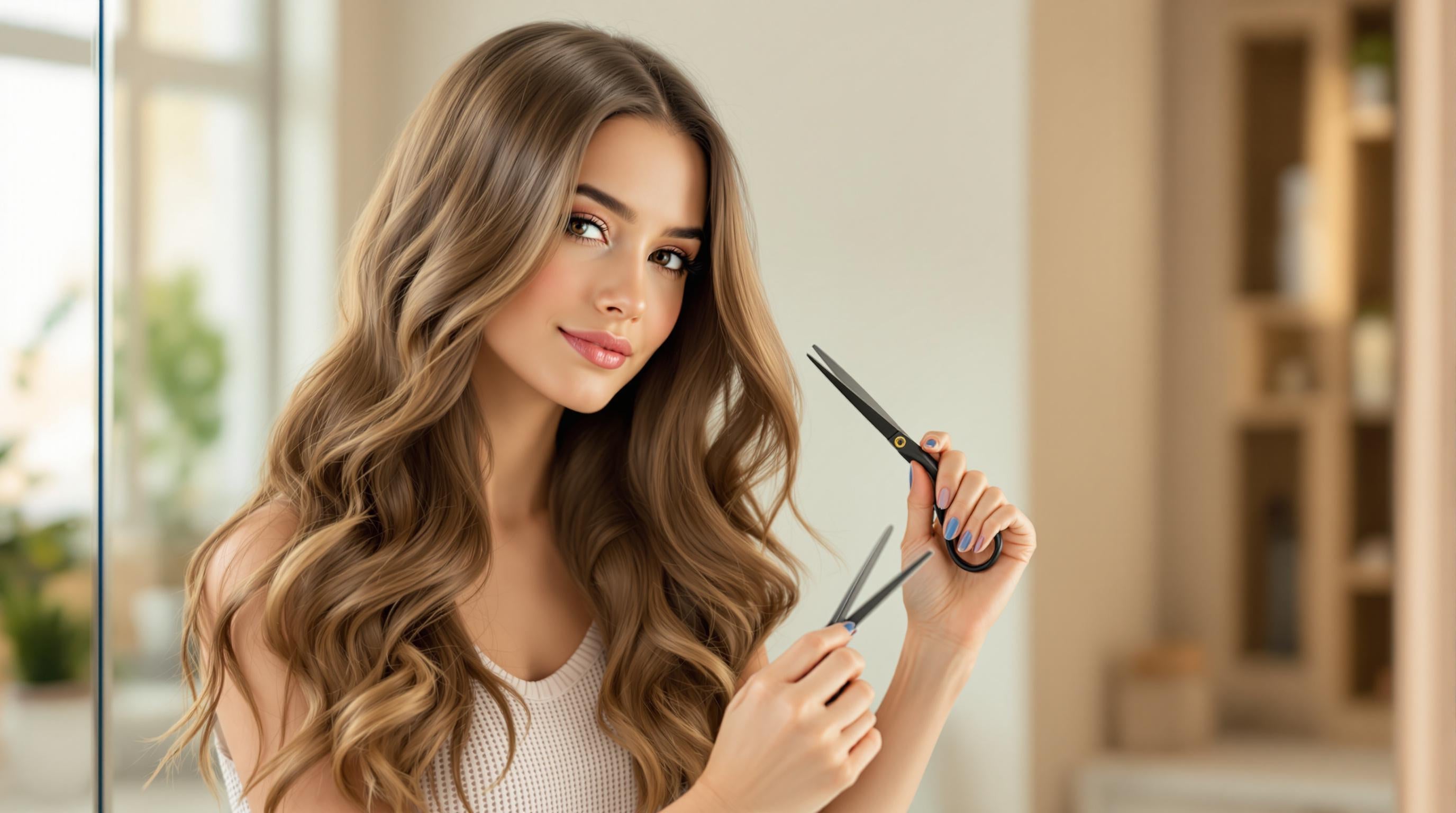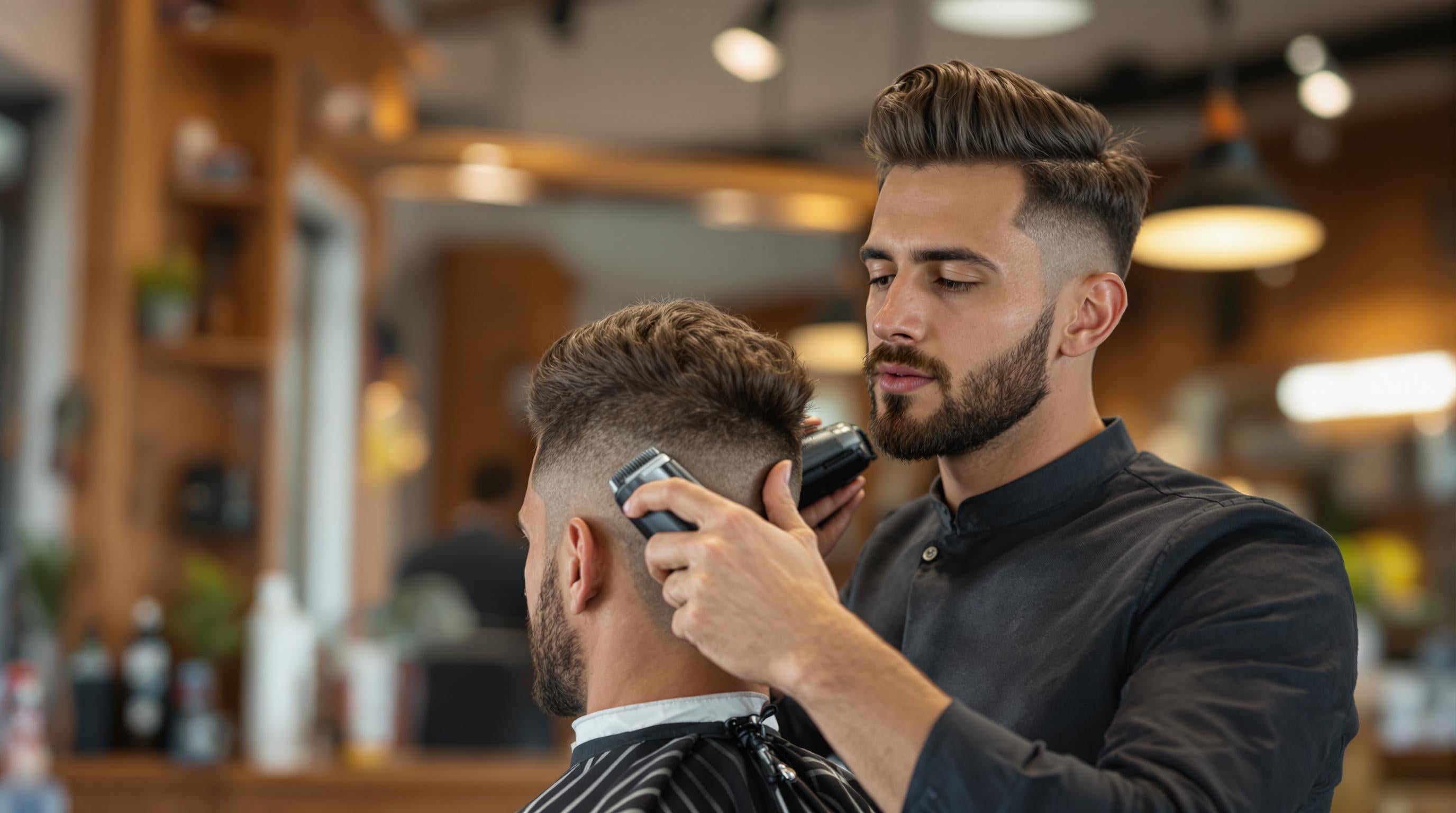How to Cut Mens Hair
Cutting men's hair requires mastering tools, techniques, and hygiene. Here's a summary to get started:
- Tools Needed: Clippers, shears, trimmers, and combs. Invest in high-quality options for precision and durability.
-
Key Techniques:
- Fading: Use clipper guards (#1 to #4) for smooth transitions.
- Layering: Achieve texture with point cutting and scissor-over-comb methods.
- Blending: Reduce bulk and soften transitions with thinning shears or razors.
-
Preparation:
- Consult clients about their style preferences and face shape.
- Section hair into crown, parietal, and nape for control.
- Maintain hygiene by sanitizing tools and using clean capes.
- Popular Styles: Modern fade, textured crop, and classic taper.
- Advanced Tips: Use premium tools, refine techniques with practice, and match styling products to hair type.
Quick Tip: Regularly clean and oil clippers and shears to ensure sharp, accurate results.
This guide covers everything you need to deliver professional men's haircuts, from preparation to finishing touches.
How To Do a Perfect Skin Fade in 3 Steps
Tools and Equipment
Creating polished men's hairstyles requires the right tools. Professional hair cutting relies on specialized equipment designed for precision and consistency, with each tool playing a specific role.
Essential Tools for Barbers
A barber's toolkit revolves around three main tools:
- Professional Clippers: These are a must for cutting large amounts of hair and creating fades. Models like the Wahl 5-Star Series offer both corded and cordless options, making them versatile and efficient [7].
-
Quality Shears: Shears are divided into two types:
- Cutting Shears: Used for basic cuts and layering.
- Thinning Shears: Designed for texturizing and reducing hair bulk.
| Tool Type | Primary Use | Key Features |
|---|---|---|
| Clippers | Bulk cutting, fades | Wider teeth, powerful motor |
| Trimmers | Detail work, edges | Narrow teeth, precision blade |
| Shears | Precision cutting | Ergonomic grip, sharp edge |
| Thinning Shears | Texturizing | Specialized blades for bulk reduction |
Keeping Tools in Top Shape
To ensure tools perform their best, regular maintenance is crucial. Clean and sanitize them frequently, check blade alignment every other month, and have them professionally serviced every 6–12 months [6]. Store them in a dry, clean area to avoid rust. For clippers, applying oil regularly reduces wear and keeps them running smoothly. Proper care not only extends the life of your tools but also ensures accurate results for each client.
Why High-Quality Shears Matter
Investing in professional-grade shears is key to delivering top-notch haircuts. Brands like Saki Shears use durable Japanese steel (440C or VG-10), which stays sharp longer than standard steel.
Here’s why barbers prioritize high-quality shears:
- They minimize hand fatigue during long sessions.
- They allow for more precise cuts with less effort.
- They provide better control for detailed work.
- With proper care, their blades last significantly longer.
Barbers often spend between $315 and $600 on premium shears, recognizing their importance for both precision and comfort [4].
Preparing for the Haircut
Getting ready for a men's haircut is just as important as the cut itself. A little preparation goes a long way in ensuring your client leaves happy and with a polished result.
Client Consultation
Talking with your client is the first step to nailing their ideal haircut. Start by asking about their preferred style while assessing their hair type and face shape. Here's what you should focus on:
- Hair growth patterns like cowlicks or uneven growth
- Past haircut experiences - what they liked or didn’t like
- Styling habits and how much effort they’re willing to put into daily maintenance
You can also recommend styles that suit their face shape. For example, adding height works well for round faces, while sharp, angular cuts suit square faces [3]. Keep notes so you can provide consistent service in future visits.
Sectioning Hair
Sectioning the hair properly is key to creating smooth fades, clean layers, and even transitions. For most men's cuts, break the hair into these main areas:
| Section | Purpose |
|---|---|
| Crown | Controls the length and layers on top |
| Parietal | Guides blending on the sides |
| Nape | Defines the fade or taper at the neck |
For fades, divide the hair horizontally into top, middle, and bottom sections [1]. This method helps maintain balance and ensures the haircut looks symmetrical.
Sanitation and Safety
Cleanliness is non-negotiable in any professional setting. Follow these hygiene practices to keep your workspace safe and professional:
- Sanitize tools before each client to prevent cross-contamination
- Use fresh neck strips and clean capes for every service
- Wash your hands before and after each client
- Use disposable blades for precision work, when needed
Keeping your tools and workspace clean not only protects your clients but also shows your commitment to professionalism [8]. With everything prepped, you’re ready to move on to the cutting techniques that bring the client's vision to life.
Cutting Techniques
To achieve professional-looking men's haircuts, mastering key cutting methods is essential. Here’s a breakdown of the techniques that ensure precise and polished results.
Fading and Layering
For fading, start at the bottom hairline using a #1 guard for the shortest length. Gradually move upward, switching to higher guards (#2, #3, #4) as you go. Blend each section smoothly to create a seamless transition [3].
Layering involves three main approaches:
- Point cutting: Adds texture.
- Double-checking: Ensures even length by reviewing cuts from various angles.
- Scissor-over-comb: Offers precise control.
After completing the fade and layers, refine the cut by blending and texturizing to add depth and movement.
Texturizing and Blending
Texturizing takes a basic cut to the next level. Here are some blending techniques and their purposes:
| Technique | Purpose |
|---|---|
| Notching (thinning shears) | Reduces bulk invisibly |
| Slicing (razor) | Softens transitions |
| Point cutting (shears) | Adds texture to thick hair |
For smooth blending, work in small sections and angle the thinning shears slightly. This prevents harsh lines and keeps the hair looking natural [2].
Popular Men's Hairstyles
These popular styles rely on the fading, layering, and texturizing techniques outlined above for a polished finish:
- The Modern Fade: Use clippers on the sides, starting from the skin and gradually transitioning to longer lengths. Maintain consistent pressure and angle for a smooth blend [5].
- The Textured Crop: Combine precise scissor work on top with faded sides. Keep the crown length between 2-3 inches, using point cutting to add texture. This style is versatile and maintains a clean, professional look [3].
- The Classic Taper: Create a subtle transition from shorter to longer hair using both clippers and shears. Start with a #2 guard at the nape and gradually increase the length. The final result should have no visible lines or harsh transitions [2][5].
Advanced Tips for Professionals
Building on the basics, professionals can achieve even better results by mastering advanced techniques and using premium tools.
Precision with High-Quality Tools
Top-tier tools, like Japanese steel shears, are essential for detailed techniques such as point cutting and texturizing. Cordless clippers and ergonomic shears not only improve precision but also reduce strain, making them ideal for intricate work. These tools are especially helpful when tackling advanced cuts that demand accuracy and finesse.
Styling and Finishing
The final touches make all the difference. Styling products help define the haircut's texture and shape, but it's crucial to match the product to the hair type. For instance:
- Use pomade to add texture and volume to thin hair.
- Opt for a strong gel to control and style thicker hair.
For extra movement, try slicing techniques or layering during the finishing process.
"Using a light hold pomade can add texture and volume to thin hair, while a strong hold gel works better for styling thicker hair. The key is matching the product's hold level to the client's hair type and desired style."
Improving Skills
Honing advanced skills ensures that every client leaves with a style tailored to their personality and preferences. Focus on refining these techniques:
- Perfect seamless fades by alternating clipper guards and blending with scissor-over-comb methods.
- Experiment with razors and thinning shears to create movement through advanced texturing.
- Develop efficient sectioning patterns tailored to different head shapes.
Boost your expertise by:
- Attending workshops and practicing on mannequins.
- Staying updated with trends by following industry leaders.
- Recording your work to analyze and improve techniques.
Conclusion
Main Points
Becoming skilled in men's haircuts takes a mix of key techniques, the right tools, and regular practice. It all starts with a detailed client consultation, accurate sectioning, and strict hygiene standards. Tools made from high-quality materials, like steel, play a big role in achieving sharp lines and smooth blends. Techniques such as fading, layering, and texturizing are the foundation of professional men's hairstyling. This guide outlines the steps needed to build these skills effectively.
Using premium tools, like ergonomic shears crafted from durable steel, not only improves precision but also makes the process more comfortable. These tools provide the durability and sharpness needed for consistent results.
Practice and Quality Tools
Investing in top-tier tools and ongoing training is essential for excelling in barbering. Regular maintenance - cleaning, oiling, and sharpening - keeps tools like shears and clippers working at their best. Well-maintained tools ensure consistent performance over time.
Continuous practice and learning opportunities, such as attending workshops or seeking mentorship, are crucial for mastering advanced techniques. The methods discussed in this guide are just the beginning; your dedication to refining these skills will shape your progress.
Check out the FAQs below for more details on tools and techniques.
FAQs
What tools do you need as a barber?
Having the right equipment is essential for delivering top-notch haircuts. Here's a quick guide to the must-haves for every barber:
Cutting Tools:
- Shears: Look for high-quality options like those made from Japanese steel.
- Clippers: Professional-grade models with adjustable guards are a must.
- Trimmers: Perfect for precise detailing work.
- Thinning Shears: Great for adding texture.
- Straight Razor: Ideal for sharp, clean lines.
Accessories:
- Combs and Brushes: For styling and precision.
- Protective Capes: Keep your clients comfortable and tidy.
- Hand Mirror: Let clients see the final result.
- Cleaning Tools: Essential for keeping your gear in top condition.
When choosing tools, prioritize materials and features that offer precision, comfort, and durability. High-quality shears and clippers can range from $100 to $300, depending on the brand and features. While premium tools may cost more upfront, they often last longer and perform better, saving you money over time.
With proper maintenance and care, these tools will help you consistently deliver sharp, polished results.

